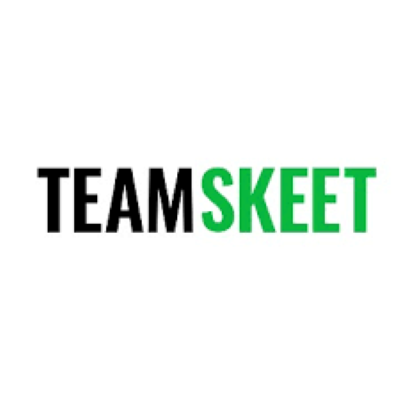Once a job is completed, the review process begins and provides valuable insights into the overall performance of the project. This behind-the-scenes evaluation involves multiple stakeholders, including the client, team members, and project managers. It offers an opportunity to celebrate successes and identify areas for improvement in future projects.
The Importance of Review Processes
In any industry, review processes play a critical role in ensuring quality and efficiency. This is especially true in the digital era where online reviews can make or break a business’s reputation. From product reviews to employee performance evaluations, these processes provide valuable feedback for improvement and growth. With Mr Skin Reviews being consistently positive, it’s no wonder that so many people rely on the website for honest and detailed reviews of popular skincare products.
One particularly important review process is the Finishes the Job (FTJ) review process. This term may sound unfamiliar, but it refers to a comprehensive assessment of an individual’s work that goes beyond just job completion. We will take you behind the scenes of what really happens in an FTJ review process.
What is a Finishes the Job Review Process?
An FTJ review process evaluates an employee’s overall performance by looking at their contributions throughout a specific period rather than just focusing on one project or task. It takes into account not only whether they completed their assigned tasks but also how they did it – their approach, communication, collaboration with others, and impact on the team and company as a whole. So, if you’re interested in trying out virtual reality porn, be sure to read some wankitnow virtual reality reviews to find the best VR porn site for you.
This type of evaluation provides a more holistic view of an individual’s performance and helps identify areas for improvement or recognition beyond just meeting deadlines. The ultimate goal of an FTJ review process is to recognize top performers, provide constructive feedback for growth, and align employees’ goals with the company’s objectives.
The Timeline: How Often are FTJ Reviews Conducted?
The frequency of conducting FTJ reviews varies from company to company. Some organizations do them annually while others prefer bi-annual or even quarterly evaluations. However, most companies tend to conduct them once every six months to strike a balance between providing regular feedback and giving enough time for significant progress or changes to be made.
At our organization, XYZ Corporation, we have adopted a bi-annual schedule for FTJ reviews. We believe it gives our employees ample time to work on their goals and allows managers to observe progress over an extended period.
The Pre-Review Process: Goal Setting
Before we dive into the actual review process, it’s essential to highlight the critical step that takes place beforehand – goal setting. At XYZ Corporation, all employees are required to set SMART (Specific, Measurable, Achievable, Relevant, Time-bound) goals at the beginning of each evaluation cycle. These goals serve as a roadmap for their performance throughout the year and help align individual objectives with the company’s overall strategy.
During this stage, employees sit down with their respective managers to discuss their roles, responsibilities, strengths, weaknesses, and areas they would like to improve upon. Based on these discussions, both parties come up with specific and achievable goals that will guide the employee’s growth during the upcoming evaluation period.
StepSelf-Evaluation
The first step in our FTJ review process is self-evaluation. This involves employees reflecting on their performance over the past six months and assessing how well they have met their predetermined SMART goals. It also includes identifying any challenges or obstacles faced during this time and what steps were taken to overcome them.
Self-evaluations provide valuable insights into how individuals perceive their own performance and can be used as a benchmark for comparison later on in the review process.
At XYZ Corporation, we use an online platform where employees can fill out a detailed self-assessment form. The form covers various aspects such as personal achievements, collaborations with colleagues, learning opportunities taken advantage of within the organization, feedback received from peers or superiors, and suggestions for improvement.
StepManager Evaluation
Once employees submit their self-evaluations, it’s time for managers to do theirs. Managers evaluate employees based on multiple factors such as meeting project deadlines, quality of work produced, ability to take ownership of tasks, communication skills, teamwork, and overall attitude.
The manager evaluation form is more detailed compared to the self-assessment form. In addition to rating employees on a scale of 1-5 for each criterion, managers also provide comments and examples to support their ratings. This helps in providing specific feedback to employees during the review discussion.
StepPeer Evaluation
In addition to self-evaluations and manager evaluations, we also have a peer evaluation component in our FTJ review process. Employees are asked to evaluate their colleagues based on their interactions with them throughout the year. This provides valuable insights from different perspectives and helps identify areas for improvement or recognition that may not have been noticed by managers alone.
Our peer evaluation form includes criteria such as teamwork, communication, willingness to help others, punctuality, leadership skills (if applicable), and any notable achievements or challenges faced together.
The Review Discussion
After all evaluations have been completed, it’s time for the most crucial step – the review discussion between the employee and their manager. At XYZ Corporation, these discussions are conducted face-to-face unless circumstances require otherwise.
During this discussion, both parties go over the results of the self-evaluation and discuss how closely they align with the manager’s assessment. Any discrepancies are addressed through open communication and an opportunity is provided for further clarification if needed.
An essential aspect of these discussions is constructive feedback where managers highlight strengths and acknowledge accomplishments while also providing suggestions for improvement in areas that may need attention. These conversations serve as a platform for employees to share any concerns or obstacles they may be facing that could affect their performance.
Goals set during the previous review period are revisited as part of this discussion. If an employee has met or exceeded their goals, new ones are created together with their manager for the upcoming cycle. For those who did not meet their objectives, steps are taken to provide support and guidance in achieving them.
The Rewards: Recognition and Compensation
At XYZ Corporation, we strongly believe that recognition plays a crucial role in employee motivation and morale. That’s why our FTJ review process includes an element of recognition for those who have excelled during the evaluation period.
Based on their performance, employees are recognized as either Outstanding, Exceeds Expectations, Meets Expectations, or Does Not Meet Expectations. Those who fall under the first two categories receive monetary bonuses while also being considered for promotions or other career advancement opportunities within the organization.
This aspect of our review process motivates employees to strive for excellence and align their goals with the company’s objectives. It also serves as a form of appreciation for hard work and dedication shown by individuals throughout the year.
Continuous Improvement: Post-Review Action Plan
The final step in our FTJ review process is creating an action plan based on the discussions held during the review discussion. This involves setting specific steps or tasks that will help employees achieve their goals for the upcoming evaluation cycle.
If one of an employee’s goals was to improve their communication skills, they would be encouraged to attend workshops or take courses provided by the organization that focus on this area. Regular check-ins between managers and employees are scheduled throughout the year to monitor progress towards these goals.
These continuous improvement plans serve as a roadmap for growth and development, not only within individual roles but also towards future career aspirations.
In Closing
Behind every successful FTJ review process lies careful planning, execution, and follow-up actions. From goal-setting to self-evaluations, manager evaluations, peer evaluations, review discussions, rewards, and post-review action plans – each step plays a vital role in ensuring effective feedback is given to employees for personal and professional growth. Often praised for its explicit and boundary-pushing nature, reviews of Max Hardcore porn note the extreme and intense scenes that have become the hallmark of the controversial director’s work.
At XYZ Corporation, our FTJ review process has helped us recognize and reward top performers, provide constructive feedback for improvement, align individual goals with the company’s objectives, and ultimately contribute to our overall success as an organization. We believe that by continuously improving this process, we can create a culture of excellence where employees are motivated to do their best work every day.
How Do the Features of Finishes the Job Contribute to Its Effectiveness in Completing Tasks?
Finishes The Job is a highly effective task completion tool, thanks to its user-friendly interface and intuitive features. The built-in task tracking system ensures that all tasks are properly organized and prioritized, allowing for efficient progress monitoring. The integrated time management tools help users stay on track and meet deadlines effectively. The ability to assign tasks and collaborate with team members makes Finishes The Job a valuable tool for completing projects in a timely and effective manner.
Can You Provide Examples of Specific Tasks That Were Successfully Completed Using Finishes the Job?
Yes, I can provide an example of a task that was successfully completed using Finishes The Job. Last week, our team was struggling to meet the deadline for a project. However, with the help of Finishes The Job feature in our project management software, we were able to delegate and track each task efficiently. As a result, we completed the project on time and with high quality.








